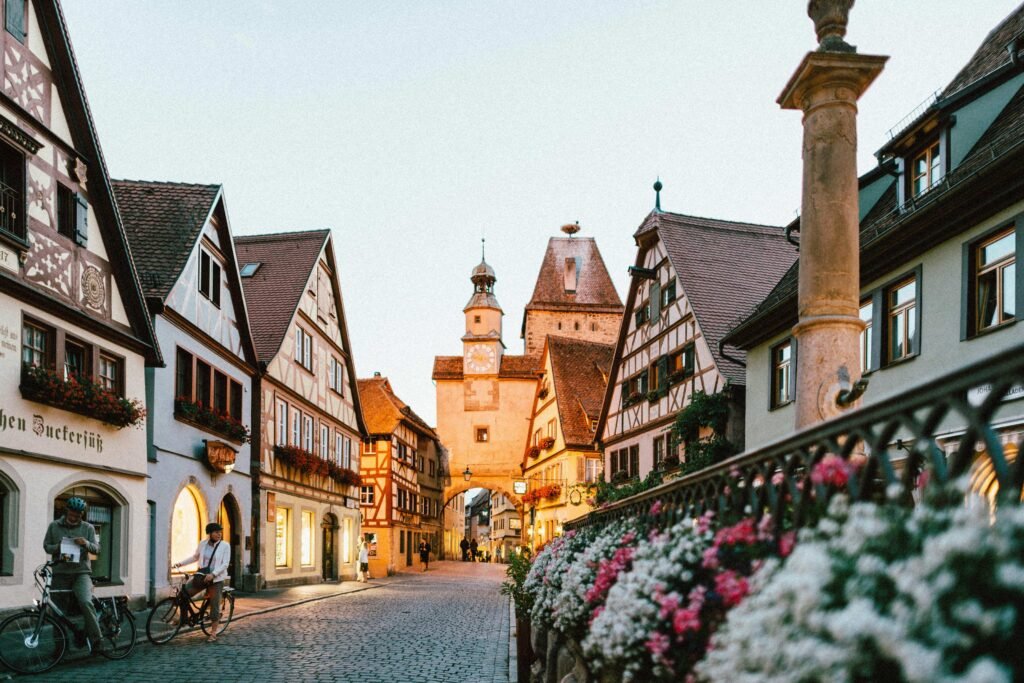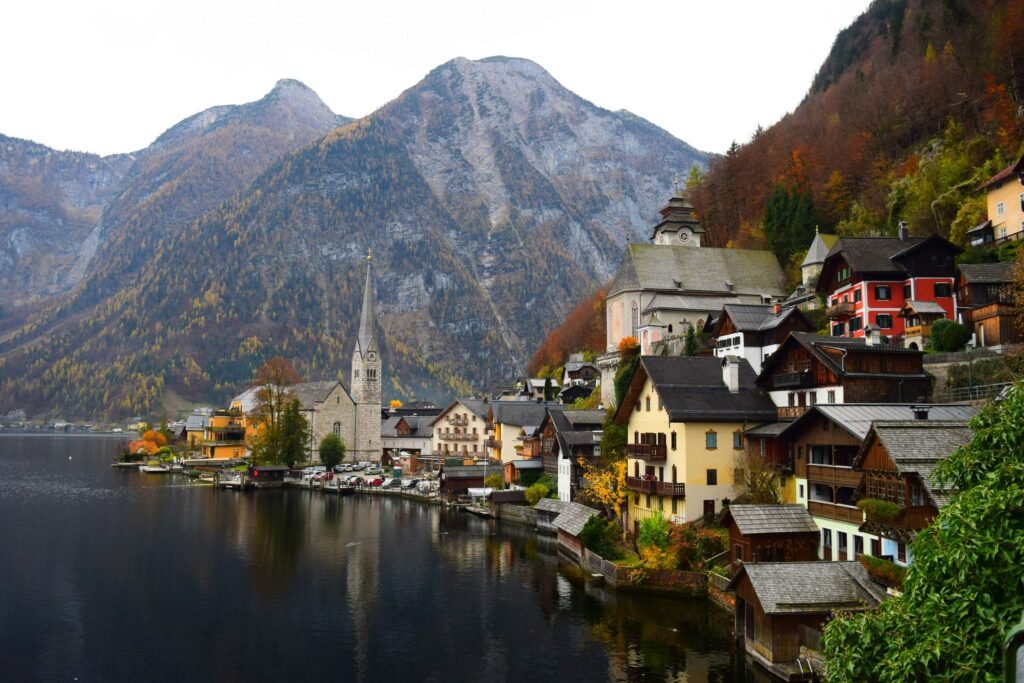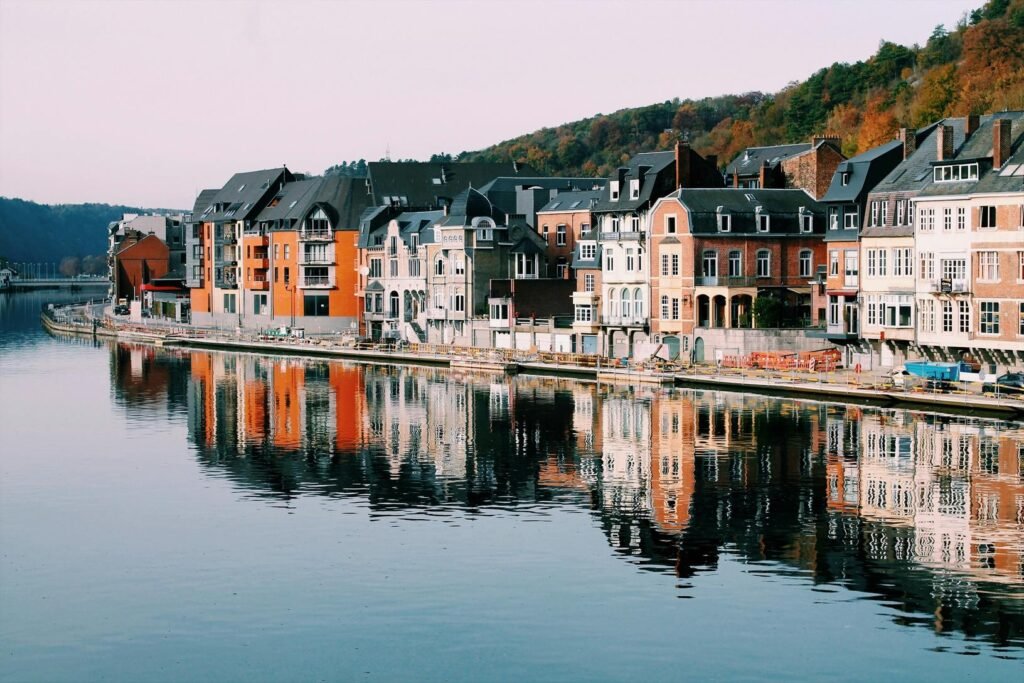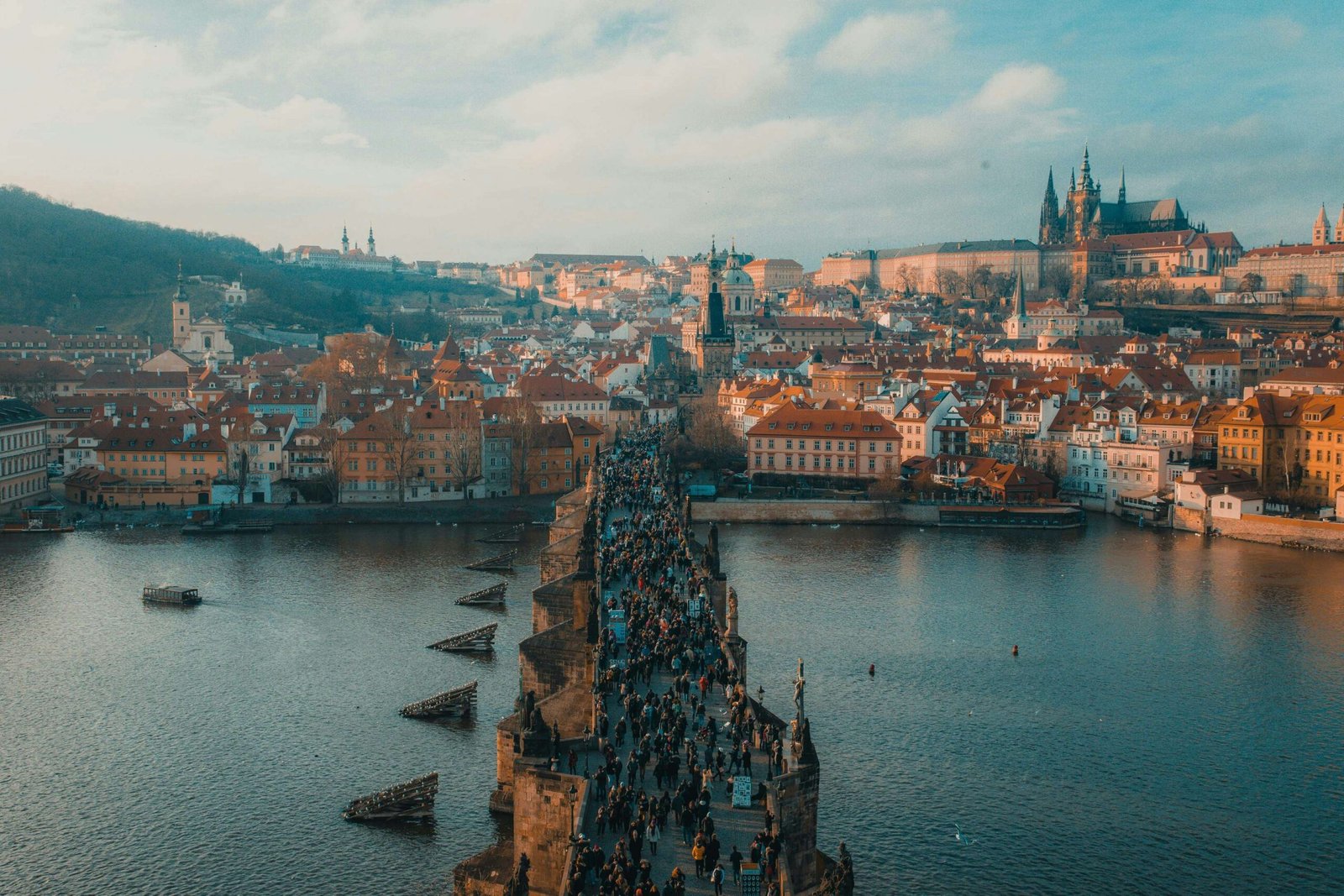Ultimate Itinerary for Europe for 10 Days: Unforgettable Adventure
Are you dreaming of a European adventure but only have 10 days to spare? Don’t worry! With careful planning and our expertly crafted itinerary for Europe for 10 days, you can experience the best of what this diverse continent has to offer. From iconic landmarks to hidden gems, this comprehensive guide will help you make the most of your whirlwind tour across Europe. Let’s dive into the perfect 10-day European itinerary that will leave you with unforgettable memories and a hunger for more!
Table of Contents
Day 1-2: London, United Kingdom
Your 10-day European adventure begins in the bustling metropolis of London. With its rich history, world-class museums, and iconic landmarks, the British capital is the perfect starting point for your itinerary for Europe for 10 days.
Day 1: Arrival and City Exploration
- Arrive at Heathrow Airport and take the Heathrow Express to Paddington Station
- Check into your hotel and freshen up
- Visit Buckingham Palace and watch the Changing of the Guard (if scheduled)
- Take a stroll through St. James’s Park to Westminster Abbey
- Admire Big Ben and the Houses of Parliament
- End your day with a ride on the London Eye for panoramic views of the city
Day 2: Cultural Immersion
- Start early at the Tower of London to see the Crown Jewels
- Walk across Tower Bridge and along the South Bank
- Visit the Tate Modern for world-class contemporary art
- Explore Borough Market for lunch and local flavors
- Spend the afternoon at the British Museum
- Enjoy dinner in Covent Garden and catch a West End show
Day 3-4: Paris, France
No itinerary for Europe for 10 days would be complete without a visit to the City of Light. Take the Eurostar from London to Paris and prepare to be enchanted by its romance and charm.
Day 3: Parisian Classics
- Arrive in Paris and check into your hotel
- Begin your Parisian adventure at the Eiffel Tower
- Walk along the Champs-Élysées to the Arc de Triomphe
- Visit the Louvre Museum to see the Mona Lisa and other masterpieces
- End your day with a Seine River cruise
Day 4: Artistic Paris
- Start your morning at Notre-Dame Cathedral (exterior only due to ongoing renovations)
- Explore the charming streets of Le Marais
- Visit the Centre Pompidou for modern and contemporary art
- Spend the afternoon in Montmartre, visiting Sacré-Cœur and Place du Tertre
- Enjoy a farewell dinner at a traditional Parisian bistro
Day 5-6: Rome, Italy
From Paris, catch a flight to Rome, the Eternal City. This leg of your itinerary for Europe for 10 days will take you through centuries of history and culinary delights.
Day 5: Ancient Rome
- Arrive in Rome and check into your hotel
- Start with a visit to the Colosseum and Roman Forum
- Explore the Palatine Hill
- Walk to the Pantheon and marvel at its architecture
- End your day at the Trevi Fountain and Spanish Steps
Day 6: Vatican City and Roman Piazzas
- Dedicate your morning to Vatican City, visiting St. Peter’s Basilica and the Vatican Museums
- Don’t miss the Sistine Chapel
- Spend the afternoon exploring Rome’s beautiful piazzas:
- Piazza Navona
- Campo de’ Fiori
- Piazza del Popolo
- Enjoy a traditional Roman dinner in Trastevere
Day 7-8: Barcelona, Spain
Fly from Rome to Barcelona, where modernist architecture meets Mediterranean beaches. This vibrant city is a must-see on any itinerary for Europe for 10 days.
Day 7: Gaudí’s Barcelona
- Arrive in Barcelona and check into your hotel
- Start with a visit to the iconic Sagrada Família
- Explore Park Güell for more of Gaudí’s whimsical creations
- Walk down Passeig de Gràcia to see Casa Batlló and Casa Milà
- End your day with tapas hopping in the Gothic Quarter
Day 8: Beach and Culture
- Begin your day at La Boqueria market for breakfast
- Stroll down Las Ramblas to the Christopher Columbus Monument
- Spend some time relaxing on Barceloneta Beach
- Visit the Picasso Museum in the afternoon
- Take the cable car to Montjuïc Castle for panoramic views of the city
- Enjoy a farewell paella dinner
Day 9-10: Amsterdam, Netherlands
The final stop on your itinerary for Europe for 10 days is the charming canal city of Amsterdam. Fly from Barcelona to Amsterdam and prepare for a mix of history, art, and laid-back Dutch culture.
Day 9: Canal Ring and Museums
- Arrive in Amsterdam and check into your hotel
- Take a canal cruise to orient yourself with the city
- Visit the Anne Frank House (book in advance)
- Explore the Rijksmuseum to see Dutch masterpieces
- End your day with a stroll through the Jordaan neighborhood
Day 10: Dutch Culture and Departure
- Start your day at the Van Gogh Museum
- Rent a bike and explore Amsterdam like a local
- Visit the Royal Palace on Dam Square
- Do some last-minute shopping in the Nine Streets area
- Enjoy a farewell dinner in a traditional Dutch restaurant
- Depart for the airport, concluding your 10-day European adventure
You May Also Like: Best Time Of Year To Visit Ireland

Tips for Making the Most of Your Itinerary for Europe for 10 Days
To ensure your 10-day European adventure goes smoothly, consider these helpful tips:
- Book in advance: With only 10 days, you’ll want to make the most of your time. Book flights, trains, and major attractions in advance to avoid disappointment and long queues.
- Get a multi-city flight: Look for flight options that allow you to fly into London and out of Amsterdam to save time and money.
- Use public transportation: European cities have excellent public transport systems. Consider getting city passes that include public transport and entry to major attractions.
- Pack light: You’ll be moving quickly between cities, so pack efficiently. A carry-on suitcase and a backpack should suffice for 10 days.
- Stay connected: Get a European SIM card or an international data plan to stay connected and use helpful travel apps.
- Learn key phrases: While English is widely spoken, learning a few basic phrases in each country’s language can enhance your experience.
- Be flexible: While this itinerary for Europe for 10 days is comprehensive, be prepared to adjust based on unexpected events or discoveries.
- Prioritize: You can’t see everything in 10 days, so prioritize the sights and experiences that matter most to you.
- Rest when needed: This itinerary is packed, so don’t be afraid to take a break if you’re feeling overwhelmed.
- Immerse yourself: Take time to sit in cafes, people-watch, and soak in the local atmosphere in each city.
Customizing Your Itinerary for Europe for 10 Days
While this itinerary covers some of Europe’s most popular destinations, you might want to tailor it to your specific interests. Here are some alternative options to consider:
For History Buffs
- Replace Barcelona with Athens to explore ancient Greek ruins
- Add a day trip to Versailles from Paris
- Include a visit to Pompeii while in Italy
For Nature Lovers
- Swap Amsterdam for Interlaken, Switzerland, to experience the Swiss Alps
- Add a day trip to the Cliffs of Moher from Dublin instead of London
- Include a visit to the Norwegian fjords by replacing Barcelona with Oslo
For Foodies
- Replace London with San Sebastian, Spain, for its renowned culinary scene
- Add a cooking class in each city you visit
- Include a wine tasting tour in Tuscany while in Italy
For Art Enthusiasts
- Extend your stay in Paris to visit more museums
- Include Florence in your Italian leg for Renaissance art
- Replace Amsterdam with Vienna for its classical music heritage and art museums
Remember, the key to a successful itinerary for Europe for 10 days is balancing must-see attractions with your personal interests and allowing time for spontaneous discoveries.
Budgeting for Your 10-Day European Adventure
When planning your itinerary for Europe for 10 days, it’s crucial to consider your budget. Here’s a rough breakdown of expenses you might encounter:
- Flights: $800-$1500 (depending on your departure city and time of year)
- Accommodation: $100-$250 per night (varies by city and hotel class)
- Transportation between cities: $300-$500 (trains and flights)
- Local transportation: $10-$20 per day
- Food: $30-$60 per day (mix of restaurants and cheaper options)
- Attractions: $20-$40 per day (varies based on activities)
- Shopping and miscellaneous: $100-$300 (personal preference)
Total estimated budget: $2500-$5000 per person
Keep in mind that these are rough estimates and your actual expenses may vary. To save money:
- Consider staying in hostels or Airbnb rentals
- Look for free walking tours in each city
- Eat at local markets and cafes instead of tourist restaurants
- Take advantage of city passes for attractions and transportation
- Travel during the shoulder season (spring or fall) for better deals

Packing Essentials for Your European Adventure
When preparing for your itinerary for Europe for 10 days, packing efficiently is key. Here’s a list of essentials:
- Comfortable walking shoes
- Weather-appropriate clothing (layers are best)
- Universal power adapter
- Portable charger
- Travel documents (passport, visas, insurance)
- Medications and first-aid kit
- Reusable water bottle
- Day bag for sightseeing
- Camera or smartphone for photos
- Travel guidebook or offline maps
Remember to check the specific requirements for each country you’re visiting, especially regarding visa and health regulations.
Making the Most of Your Time in Each City
With only 10 days to explore Europe, maximizing your time in each city is crucial. Here are some tips to help you make the most of your itinerary for Europe for 10 days:
- Use hop-on-hop-off buses: While not always the cheapest option, these can be an efficient way to see major sights quickly, especially on your first day in a new city.
- Take advantage of early mornings: Many popular attractions are less crowded early in the day. Start your sightseeing early to avoid long queues.
- Book skip-the-line tickets: For major attractions like the Eiffel Tower or Vatican Museums, booking skip-the-line tickets in advance can save you hours of waiting.
- Use audio guides: Many attractions offer audio guides, which can provide valuable information more quickly than reading every sign or hiring a tour guide.
- Plan your route: Each evening, plan your route for the next day to avoid backtracking and wasting time.
- Try local transportation: Metros, trams, and buses can often be faster and cheaper than taxis.
- Combine nearby attractions: Group sights that are close to each other on the same day to save time.
- Consider guided tours: For complex sites like the Roman Forum or Louvre, a guided tour can help you see the highlights efficiently.
- Don’t overplan: Leave some room in your schedule for spontaneous discoveries or unexpected delays.
- Use travel apps: Apps like Google Maps, CityMapper, or local transport apps can help you navigate efficiently.
Embracing European Culture
While following your itinerary for Europe for 10 days, don’t forget to immerse yourself in the local culture. Here are some ways to enhance your cultural experience:
- Try local cuisines: Each country has its own culinary specialties. Don’t miss out on fish and chips in London, croissants in Paris, pasta in Rome, tapas in Barcelona, and stroopwafels in Amsterdam.
- Visit local markets: Markets are a great way to experience local life. Try Borough Market in London, Marché Bastille in Paris, Campo de’ Fiori in Rome, La Boqueria in Barcelona, and Albert Cuyp Market in Amsterdam.
- Attend cultural events: Check local event calendars for festivals, concerts, or exhibitions happening during your visit.
- Observe local customs: Be mindful of local etiquette, such as tipping practices or greeting customs.
- Learn a few phrases: Even basic greetings in the local language can go a long way in connecting with locals.
- Visit a local cafe or pub: Spend some time people-watching and soaking in the atmosphere at a local hangout.
- Take a cooking class: Learn to make a local dish and take the recipe home as a souvenir.
- Use local guides: Consider booking a tour with a local guide for insider knowledge and stories.
- Explore beyond tourist areas: Venture into residential neighborhoods to see everyday local life.
- Be open-minded: Embrace differences in culture and lifestyle – that’s part of the joy of travel!
Capturing Memories of Your European Adventure
Your itinerary for Europe for 10 days will be filled with unforgettable moments. Here are some ways to preserve these memories:
- Keep a travel journal: Write down your daily experiences, impressions, and funny moments.
- Take photos: Capture not just the famous sights, but also street scenes, food, and candid moments.
- Collect postcards: Buy a postcard from each city and write a short memory on the back.
- Save tickets and maps: These make great scrapbook material or travel shadowbox items.
- Buy local art: Support local artists and bring home a unique piece of each city.
- Create a digital photo book: After your trip, compile your best photos into a book.
- Share on social media: If you’re comfortable, share your experiences with friends and family.
- Collect small mementos: Things like coins, train tickets, or even restaurant business cards can be meaningful reminders.
- Make a playlist: Create a playlist of songs that remind you of each city or your overall trip.
- Learn to cook a favorite dish: Bring home the flavors of Europe by learning to cook a dish you loved on your trip.
To make the most of your itinerary for Europe for 10 days, consider these additional factors that can significantly impact your trip. From seasonal variations to sustainable travel practices, these insights will help you plan a more enjoyable and responsible European adventure.
Seasonal Considerations for Your European Trip
The time of year you choose for your 10-day European itinerary can greatly affect your experience. Here’s what to expect in each season:
Spring (March to May)
- Mild temperatures and blooming flowers make for beautiful scenery
- Easter celebrations can impact travel, especially in Italy
- Fewer crowds compared to summer, but increasing as season progresses
- Pack layers as weather can be unpredictable
Summer (June to August)
- Peak tourist season with the best weather but largest crowds
- Long daylight hours allow for extended sightseeing
- Higher prices for accommodations and flights
- Festivals and outdoor events are abundant
- Book attractions well in advance to avoid disappointment
Fall (September to November)
- Mild temperatures and beautiful fall foliage
- Reduced crowds and prices after summer peak
- Harvest festivals and cultural events in many cities
- Pack for cooler temperatures, especially in later months
Winter (December to February)
- Cold temperatures and possible snow, especially in Northern Europe
- Festive Christmas markets and New Year celebrations
- Fewer tourists at major attractions
- Shorter daylight hours may limit sightseeing time
- Some outdoor attractions may have limited hours or be closed
Adjusting your itinerary:
- In summer, plan early morning visits to popular attractions to avoid crowds
- In winter, focus more on indoor activities and museums
- Consider adding festive markets to your itinerary if traveling in December
- Be prepared for weather-related travel delays in winter months

Sustainable Travel Tips
Make your European adventure more eco-friendly with these sustainable travel practices:
- Use public transportation: Utilize Europe’s excellent public transit systems instead of taxis or rental cars. Many cities offer multi-day passes for tourists.
- Walk or bike: Many European cities are pedestrian-friendly. Use bike-sharing services for an eco-friendly way to explore.
- Choose eco-friendly accommodations: Look for hotels with green certifications or consider eco-hostels.
- Support local businesses: Eat at locally-owned restaurants and shop at local markets rather than international chains.
- Reduce plastic waste: Bring a reusable water bottle, shopping bag, and utensils. Many European cities have excellent tap water.
- Respect local environments: Stay on marked trails when hiking and don’t remove natural or historical artifacts.
- Offset your carbon footprint: Consider using a reputable carbon offset program to compensate for your flights.
- Conserve energy: Turn off lights and air conditioning when leaving your hotel room.
- Participate in local conservation efforts: Look for opportunities to join beach clean-ups or conservation activities.
- Learn about local sustainability initiatives: Many European cities have interesting sustainability projects you can learn from.
Health and Safety Tips
Staying healthy and safe is crucial for enjoying your 10-day European itinerary. Here are some essential tips:
- Travel Insurance: Always purchase comprehensive travel insurance that covers medical emergencies and trip cancellations.
- Health Precautions:
- Ensure your routine vaccinations are up to date
- Carry any prescription medications in their original packaging with a doctor’s note
- Pack a basic first-aid kit with essentials like pain relievers, band-aids, and any personal medications
- Safety Tips:
- Be aware of pickpockets, especially in crowded tourist areas and public transportation
- Keep copies of important documents separate from the originals
- Use hotel safes for valuable items
- Stay alert in unfamiliar areas, especially at night
- Be cautious when using ATMs and avoid carrying large amounts of cash
- Emergency Situations:
- Know the local emergency number (112 for most of Europe)
- Have the contact information for your country’s embassy in each location you’re visiting
- Keep a list of emergency contacts easily accessible
- Stay Informed:
- Check your government’s travel advisories before and during your trip
- Be aware of any local laws or customs that might differ from your home country
Remember, while Europe is generally safe for tourists, it’s always best to stay vigilant and trust your instincts.
Technology and Connectivity
Staying connected during your European adventure can enhance your experience and help you navigate unfamiliar territories. Here’s what you need to know:
- Mobile Data Options:
- Consider purchasing a European SIM card for affordable data
- Some providers offer EU-wide roaming at no extra cost
- Alternatively, rent a portable Wi-Fi device for constant connectivity
- Essential Apps:
- Google Maps or CityMapper for navigation
- Google Translate or DeepL for language translation
- TripAdvisor or Yelp for restaurant and attraction reviews
- XE Currency for quick currency conversions
- Rome2Rio for transportation options between cities
- Wi-Fi Availability:
- Most hotels, cafes, and restaurants offer free Wi-Fi
- Many European cities have free public Wi-Fi in central areas
- Be cautious when using public Wi-Fi and avoid accessing sensitive information
- Tech Gear to Bring:
- Universal power adapter (Europe uses 220-240V)
- Portable charger or power bank
- Unlocked smartphone compatible with European networks
- Camera or smartphone with good camera capabilities
- Cybersecurity:
- Consider using a VPN for secure internet access
- Avoid accessing sensitive information (like online banking) on public Wi-Fi
- Enable two-factor authentication on important accounts
Remember to enjoy your surroundings and not let technology distract you from the incredible experiences Europe has to offer!
Solo Travel vs. Group Travel Considerations
Your travel companions (or lack thereof) can significantly impact your European experience. Here’s how to adjust your itinerary for different travel styles:
Solo Travel
Pros:
- Complete flexibility in itinerary and pace
- Easier to meet new people and immerse in local culture
- Often easier to get last-minute tickets or reservations
Cons:
- Can be more expensive (no shared costs)
- Safety concerns in unfamiliar places
- Potential for loneliness
Tips for solo travelers:
- Stay in hostels or join walking tours to meet other travelers
- Be extra vigilant about personal safety, especially at night
- Consider joining group tours for certain activities or day trips
Group Travel
Pros:
- Shared costs can make the trip more affordable
- Built-in companionship and shared experiences
- Can be safer, especially in unfamiliar areas
Cons:
- Need to compromise on itinerary and pace
- Potential for disagreements or conflicts
- Less opportunity for solitude or personal reflection
Tips for group travel:
- Assign different responsibilities to group members (e.g., navigation, bookings)
- Plan some free time for individual exploration
- Use apps like Splitwise to easily manage shared expenses
Adjusting the itinerary:
- Solo travelers might want to add more flexible time for spontaneous activities
- Groups may need to book restaurants and tours further in advance
- Consider mixing guided tours with independent exploration to cater to different preferences in a group
Remember, whether you’re traveling solo or in a group, communication and flexibility are key to a successful European adventure!
You May Also Like: Travel Backpacks For Women
Language Guide
While English is widely spoken in tourist areas, learning a few key phrases in the local language can enhance your experience and show respect for the local culture. Here are some essential phrases for each country on your itinerary:
French (Paris)
- Hello: Bonjour
- Thank you: Merci
- Please: S’il vous plaît
- Do you speak English?: Parlez-vous anglais?
- Where is…?: Où est…?
Italian (Rome)
- Hello: Ciao
- Thank you: Grazie
- Please: Per favore
- Do you speak English?: Parla inglese?
- Where is…?: Dov’è…?
Spanish (Barcelona)
- Hello: Hola
- Thank you: Gracias
- Please: Por favor
- Do you speak English?: ¿Habla inglés?
- Where is…?: ¿Dónde está…?
Dutch (Amsterdam)
- Hello: Hallo
- Thank you: Dank je
- Please: Alstublieft
- Do you speak English?: Spreekt u Engels?
- Where is…?: Waar is…?
Additional useful phrases:
- “I would like…” (for ordering in restaurants)
- “How much?” (for shopping)
- “Excuse me” (for getting attention or apologizing)
- Numbers 1-10 for understanding prices
Remember, even if you don’t pronounce everything perfectly, locals usually appreciate the effort to speak their language!
Alternative Transportation Options
While flying between cities is often the quickest option for a 10-day itinerary, consider these alternative transportation methods for a different perspective on your European journey:
- Train Travel:
- Eurail Pass: Offers flexible train travel across multiple countries
- High-speed trains: Fast connections between major cities (e.g., Eurostar, TGV, AVE)
- Scenic routes: Enjoy beautiful landscapes, especially in Switzerland or along the Mediterranean
Pros:
- Often more comfortable than flying
- City center to city center travel
- Scenic views
- No liquid restrictions or long security lines
Cons:
- Can be more time-consuming for longer distances
- May be more expensive than budget flights for single journeys
- Driving:
- Rental cars offer flexibility to explore countryside and smaller towns
- International Driving Permit may be required in some countries
Pros:
- Freedom to explore off-the-beaten-path locations
- Flexibility in schedule
- Can be cost-effective for groups
Cons:
- Parking can be challenging and expensive in cities
- Different driving rules in each country
- Potential for traffic jams and toll roads
- Bus Travel:
- Companies like Flixbus offer affordable inter-city routes
- Often cheaper than trains or planes, but slower
Pros:
- Budget-friendly option
- Can access smaller towns not served by trains
- No baggage weight restrictions
Cons:
- Longer travel times
- Less comfortable for long journeys
- Overnight Travel:
- Night trains or buses can save on accommodation costs
- Popular routes include Paris to Barcelona or Rome to Paris
Pros:
- Save time by traveling while you sleep
- Save on one night’s accommodation
Cons:
- May not be as restful as a proper bed
- Can be more expensive than daytime travel
When considering alternative transportation, weigh the trade-offs between cost, time, comfort, and the type of experience you want. Sometimes, a mix of different modes can provide the best balance for your 10-day European itinerary.
Accessible Travel Information
Making your European adventure accessible to all travelers is important. Here’s some key information for travelers with specific needs:
- Major Attractions:
- Many popular sites offer accessibility services, but it’s best to check in advance
- The Louvre in Paris and the Colosseum in Rome have wheelchair access and offer free admission for disabled visitors and their companions
- Some attractions like the Eiffel Tower have limited accessibility to certain areas
- Transportation:
- Most major European cities have accessible public transportation, but the level of accessibility varies
- London’s tube system has a comprehensive accessibility guide
- Paris has been improving metro accessibility, but many stations still lack elevators
- Taxis in most cities can accommodate wheelchairs, but it’s best to book in advance
- Accommodations:
- Look for hotels that specifically mention accessibility features
- Many international chain hotels have standardized accessibility options
- In historic city centers, be aware that some buildings may not have elevators
- Resources:
- Check official tourism websites for each city for accessibility guides
- Websites like Sage Traveling specialize in accessible European travel advice
- Consider booking through a travel agency that specializes in accessible travel for personalized assistance
- Tips for different needs:
- Mobility issues: Research step-free routes and rent mobility equipment if needed
- Visual impairments: Many museums offer touch tours or audio descriptions
- Hearing impairments: Look for attractions offering written guides or sign language tours
- Cognitive disabilities: Some attractions offer ‘quiet hours’ or sensory-friendly visiting times
- General advice:
- Always call ahead to confirm accessibility arrangements
- Allow extra time for accessible routes, which may be longer
- Consider traveling during shoulder season when cities are less crowded
Remember, while accessibility in Europe is improving, it’s not uniform across all countries or even within cities. Thorough research and advance planning are key to ensuring a smooth and enjoyable trip for travelers with specific needs.
By considering these additional factors – from seasonal variations to accessibility needs – you can further customize and enhance your 10-day European itinerary. Whether you’re a solo traveler, part of a group, or have specific requirements, Europe’s diverse offerings can accommodate a wide range of preferences and needs. With careful planning and an open mind, your European adventure is sure to be an unforgettable experience!
Conclusion: Making the Most of Your Itinerary for Europe for 10 Days
Embarking on a 10-day journey through Europe is an exciting adventure that will leave you with a lifetime of memories. This itinerary for Europe for 10 days takes you through five iconic cities, each offering a unique blend of history, culture, and experiences. From the regal charm of London to the romantic streets of Paris, the ancient wonders of Rome to the architectural marvels of Barcelona, and finally to the picturesque canals of Amsterdam, you’ll get a taste of the diverse tapestry that is Europe.
Remember, while this itinerary is packed with highlights, the true joy of travel often lies in the unexpected moments and personal discoveries. Don’t be afraid to wander down a quaint side street, chat with locals in a neighborhood cafe, or spend an extra hour in a museum that captivates you. Europe has a way of surprising and delighting visitors, so remain open to the serendipitous moments that may become your favorite memories.
As you follow this itinerary for Europe for 10 days, you’ll traverse through centuries of history, indulge in diverse cuisines, admire breathtaking art and architecture, and experience the vibrant cultures that make Europe a continually popular destination. Whether it’s your first time in Europe or you’re a seasoned traveler, this journey will inspire, educate, and leave you yearning to return.
So pack your bags, charge your camera, and prepare for an unforgettable 10-day adventure across Europe. Bon voyage!



